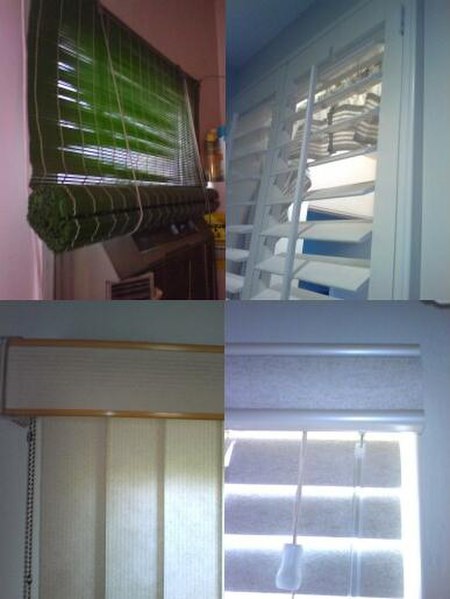Sudare are traditional Japanese screens or blinds, made of horizontal slats of decorative wood, bamboo, or other natural material, woven together with simple string, colored yarn, or other decorative material to make nearly solid blinds Sudare can be either rolled or folded up out of the way. They are also sometimes called misu (御簾/みす), particularly if they have a green fabric hem. Yoshizu, non-hanging sudare, are made of vertical slats of common reed and used as screen.
Misu protecting the view to the Imperial throne in the Shishin-den of Kyoto Imperial Palace
Less formal (but still cloth-bound) sudare in a common home; from the more brightly-lit side, they are opaque
Sudare on a train; from the more dimly-lit side, they are transparent
Outside view of the Imperial Palace from The Tale of Genji. From this viewpoint, it would not be possible to see through the sudare; artistic license is used.
A window blind is a type of window covering. There are many different kinds of window blinds which use a variety of control systems. A typical window blind is made up of several long horizontal or vertical slats of various types of hard material, including wood, plastic or metal which are held together by cords that run through the blind slats. Vertical blinds run along a track system which can tilt open and closed and move side-to-side. Window blinds can be manoeuvred with either a manual or remote control by rotating them from an open position, with slats spaced out, to a closed position where slats overlap and block out most of the light. There are also several types of window coverings, called shades, that use a single piece of soft material instead of slats.
Various window blind styles
Window blinds stopper. An old window part to prevent open window blinds from closing. From the Sarona Museum in Israel.
Japanese Shoji Blinds in Nottingham UK.
Cellular shades, also called honeycomb shades, hanging in a window.








